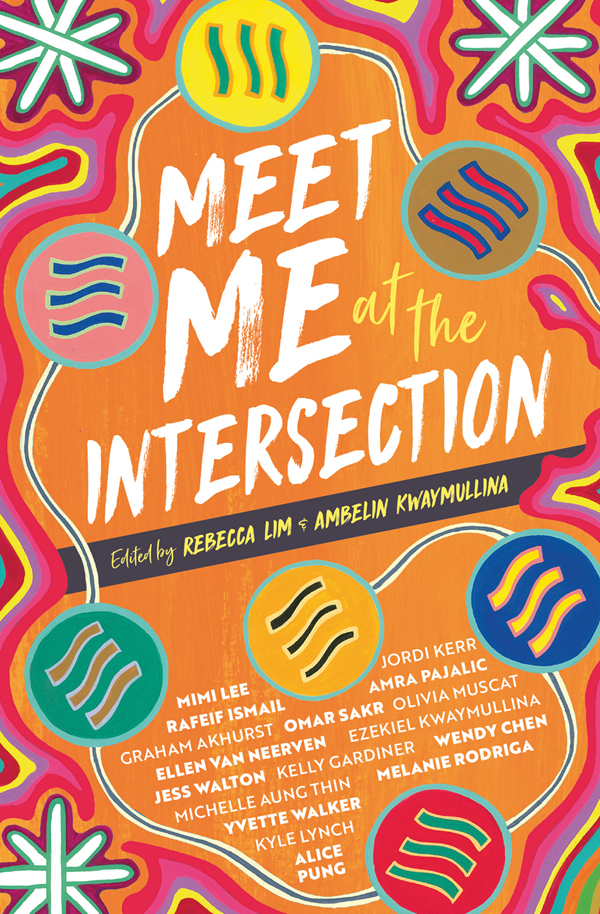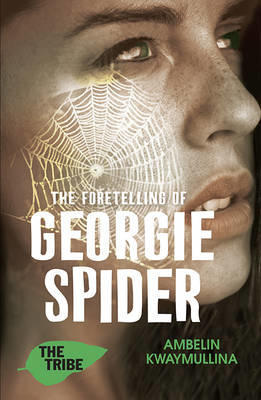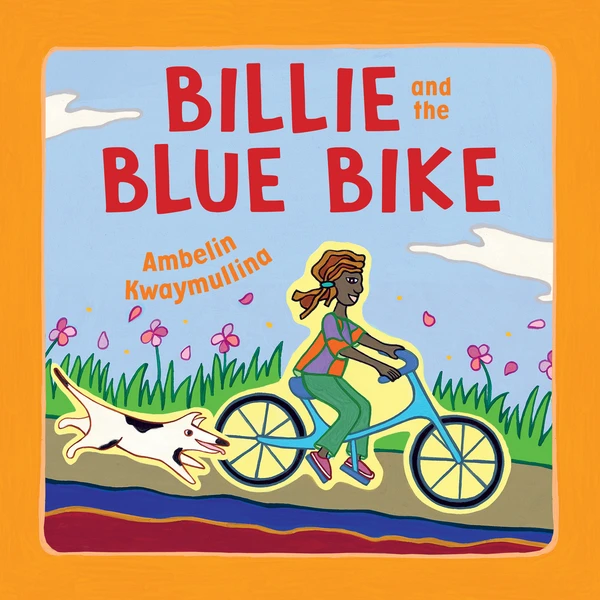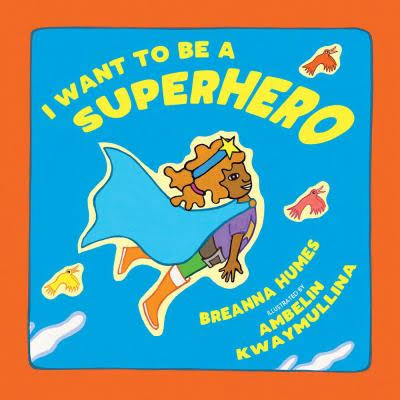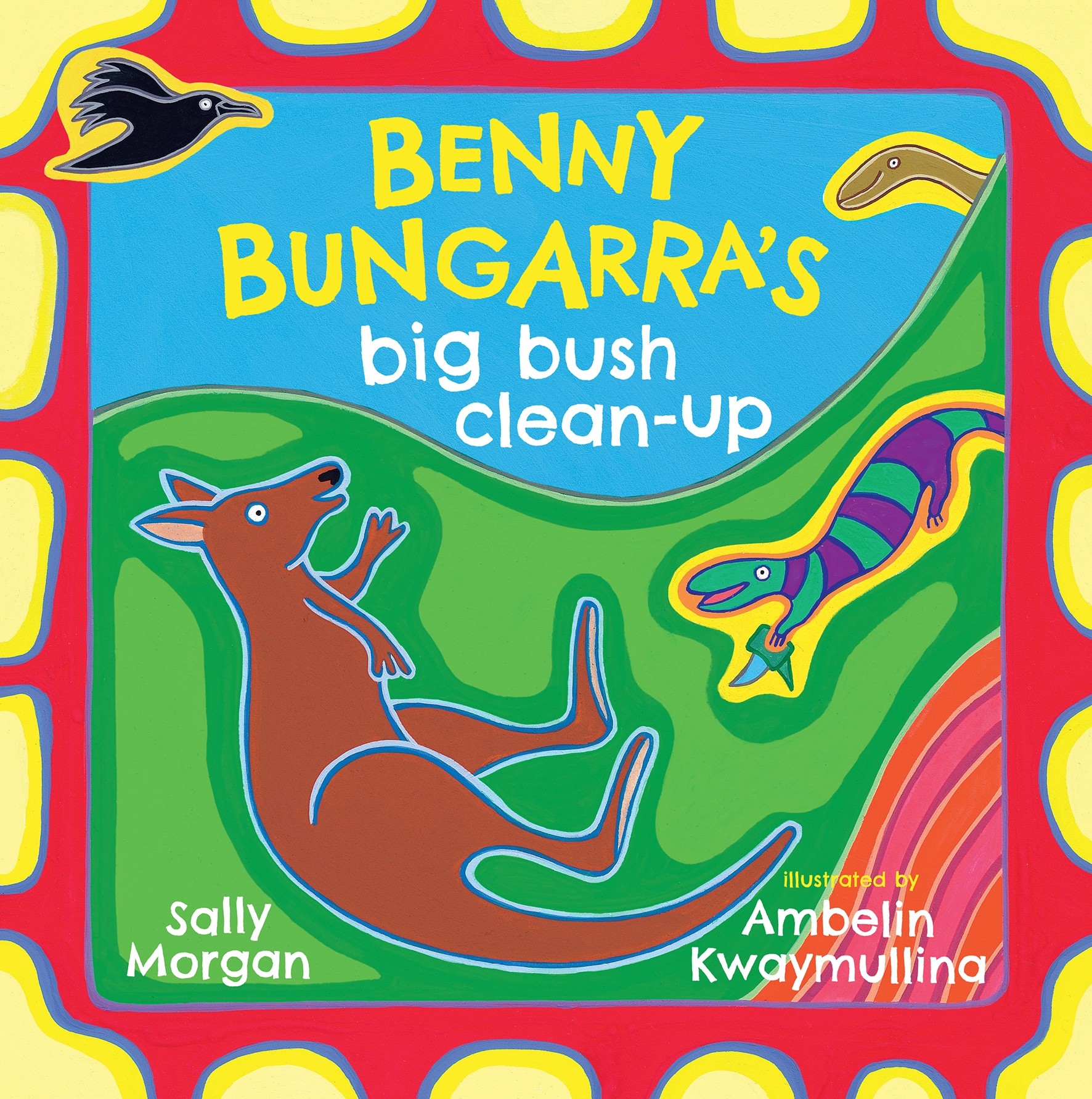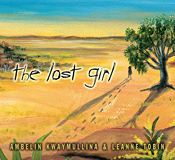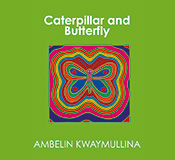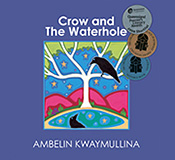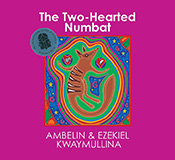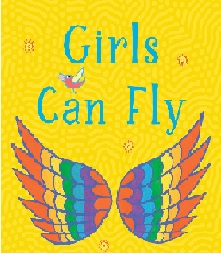-



About Ambelin Kwaymullina…
Ambelin Kwaymullina is a First Nations writer and illustrator who comes from the Palyku people of the Pilbara region of Western Australia. Ambelin tells stories across a range of forms, including poetry, short stories, essays, young adult novels, and picture books (but please note that this website is only for her works of creative fiction). Ambelin is a previous winner of the Victorian Premier’s Literary Awards and the Aurealis Award. Much of her work concerns Indigenous Futurisms, which she has written about as:
… stories
grounded in Indigenous ways of knowing
being and doing
and in our deep knowledge
of injustice
Like all our stories
our futurist narratives
are informed by the tales of our Ancestors
which tell of realities
that are holistic
non-linear
pluralist
and in which everything lives
and is related to each other
(Ambelin Kwaymullina, ‘Indigenist Futurisms’, publication forthcoming in Carlson et al, The Routledge Handbook of Australian Indigenous Peoples and Futures)
Ambelin has worked in government and as an academic, teaching law. Her achievements as an educator have been recognised through multiple awards, including the Neville Bonner Award for Indigenous Education. She is a Senior Fellow of the Higher Education Academy, a member of the Australian Institute of Aboriginal and Torres Strait Islander Studies, and a member of the First Nations Australia Writer’s Network.
Ambelin is represented by Katelyn Detweiler at Jill Grinberg Literary Management. -

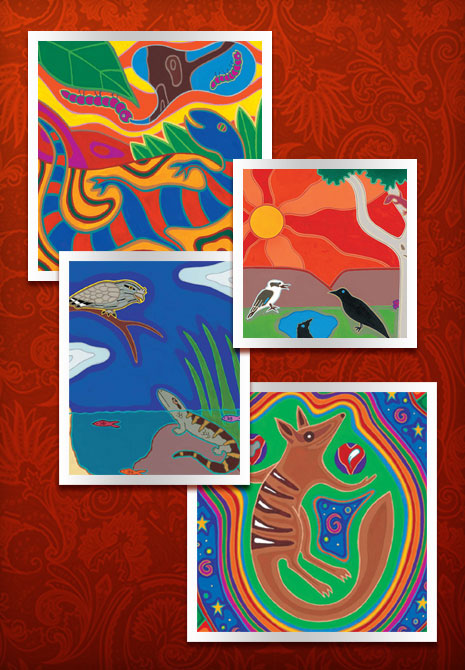

About Ambelin Kwaymullina…
The Extended Version:
My story does not begin with me. It begins with all the people in my family bloodline who were born Palyku, long before I came into the world.
The many Aboriginal nations of Australia call our homelands our Countries. Country is heart and home, made by the Ancestor beings during what is sometimes called the Dreaming. In the Dreaming, the Ancestors danced and sang and travelled and gave life to all that exists today. They formed a reality where life sustains and supports each other – and where everything lives.
This is my heritage. Aboriginal people have been storytellers for generations, and we will be storytellers for generations to come. I am far from the first, and I can never hope to be the best. The greatest of our storytellers are the old people who have gone before us, and the Countries that give heart and hope to us all.
I know that the path I walk now was formed by the passage of many feet, including those who lived through the hardest of times for Aboriginal people in Australia, the storytellers born into the trauma of colonialism. And I understand that it is because of their courage and their strength of will that my path exists at all.
I think of those brave generations as I look out, in my mind's eye, at the children and teenagers of the different races and cultures of this planet. They will need courage too, and strength, because for so many of them – for too many – their future is fraught with fear and uncertainty. I cannot speak to them all, except, perhaps, by telling my stories. And through my stories I speak about the things that generations of my people have taught me: Stay strong. Be proud of who you are. Stand tall inside your own head, even when this world forces you to bow down on the outside. And never ever forget how to laugh.
-
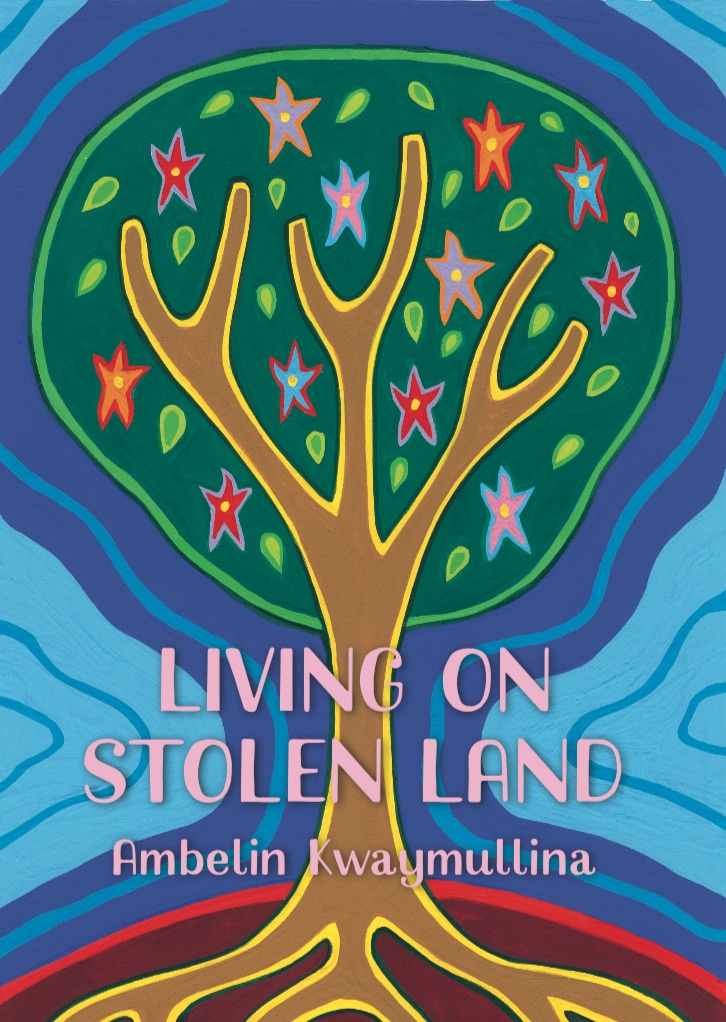


Living on Stolen Land is a prose-styled look at our colonial-settler ‘present’. This book is the first of its kind to address and educate a broad audience about the colonial contextual history of Australia, in a highly original way. It pulls apart the myths at the heart of our nationhood, and challenges Australia to come to terms with its own past and its place within and on Indigenous Countries.
Read extracts from Living on Stolen Land here



“Days began when the sun rose and ended when it set. In between, the connections I made – like the ways I helped my dad, or didn’t help him – were what told me if I was moving forwards or backwards. As my Grandpa Jim had once said to me, Life doesn’t move through time, Bethie. Time moves through life.” (Catching Teller Crow, p 5)
To find out more about my young adult books, including reading reviews and accessing teacher's notes, click on the book title.


Tribe Series Animal Game
In the ancient Firstwood each member of the Tribe bonds with
a forest animal - and it changes them...A Message from Ember Crow
Find Out What Animal You AreSo you've come searching for your animal.
You must understand, we don't choose them. They choose us. For me it was the clever crows, with their smug eyes and their shiny treasures. I cannot tell which animal it will be for you. But you should know that it will change you. Your animal will give you your name, and teach you about what it is to experience this world as something other than a human being. If you are not ready to enter a larger and more complex reality, if you are not ready to be part of the connections that bind us to each other and this living earth – then stop searching.
But if you are, continue on. And when you return you will be able to answer me when I say: I am Ember Crow. Who are you?
Find out what animal would you be linked with below...



I Am A . . .


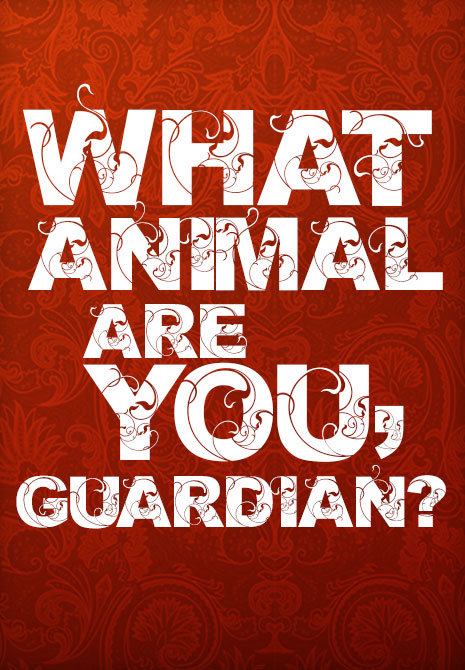






Your animal is a: Wolf
The Wolves of the Firstwood have golden eyes and fur of a red- or orangey-brown colour. They live in packs of between ten to fifteen members and make their homes in underground dens. Wolves are clever hunters, and will work cooperatively to catch their prey.
People bonded with Wolves tend to have a strong sense of right and wrong. They value connections with others, preferring to exist as part of a group than in solitude, and will put the welfare of their friends or family above their own. Wolf people are true friends – they are unwaveringly loyal and unflinchingly honest. They will fiercely defend anyone who they regard as a member of their 'pack', but they also won't hesitate say something if they think a pack member has behaved badly.
Wolf people have been known to develop an enhanced sense of smell and increased agility.



Your animal is a: Treecat
The Treecats of the Firstwood are carnivorous marsupials that can grow up to two metres (6 ft) long, measured from nose to tail. They have dark brown fur, small round ears, pink noses and black eyes. Treecats are nocturnal, and use their powerful hind legs and long tail to cling to trees as they climb. They can leap enormous distances, and their sharp claws, night vision and ability to drop from great heights make them excellent hunters. Treecats mate for life and will choose a single tuart to use as their home base, defending their tree against any perceived threat.
People bonded with Treecats tend to be wary of strangers but form strong and enduring attachments to those that they love. It can be hard to win their trust but once a treecat person accepts someone as a friend, they will be friends for life. Treecat people feel things very deeply and while they can easily shrug off criticism if it comes from a stranger, they are highly sensitive to the opinions of people they care about.
Treecat people have been known to develop night vision and increased dexterity.



Your animal is a: Perentie
Perenties are lizards that bear a resemblance to the vastly larger saurs. They grow up to three metres (9 ft) in length and can move at great speed either on all fours or on their hind legs. Perenties live in burrows and have patterned black and green skin that allows them to blend in with the surrounding forest. They use their razor sharp claws and long tails as weapons, and are capable of defending themselves against far larger animals. While Perentie are generally shy they will not hesitate to attack if cornered, and they fight so fiercely that even the Firstwood wolves will not hunt a Perentie.
People bonded with Perenties tend to prefer to leave others alone and to be left alone themselves. However, if they feel threatened a Perentie person will become a fearsome warrior. Perentie people refuse to be intimidated by anyone or anything, and if they witness an injustice they will fight to make things right, no matter who or what stands in their way.
Perentie people have been known to develop fast reflexes.



Your animal is a: Hawk
The Hawks of the Firstwood have grey heads and bodies, with brown and white stripes across their chests and the underside of their wings. Their eyes are orange and they use their powerful curved claws to grip hold of their prey. Hawks make their nests at the very tops of tuart trees. They have excellent eyesight and can adjust their focus, so that they never lose sight of prey even when they are swooping towards it.
People bonded with Hawks tend to notice all the tiny details of everything happening around them. They are keen observers of the world and have a deep understanding of events and of other people. Because of this, Hawk people are good at influencing others and predicting behavior. They are often able to stop trouble before it eventuates or to see danger where no one else does.
Hawk people have been known to develop acute eyesight.



Your animal is a: Silver Bat
Silver Bats have pale grey fur and their wings are made of a thin membrane which is almost transparent. This makes these bats appear to be a ghostly silver colour as they glide through the skies at night. Their eyes are black and they have huge ears and a strange, leaf-shaped nose. Silver Bats live in small groups in rock crevasses and hunt in pairs. They prey on small birds and lizards and use their powerful jaws to kill with a single bite to the neck. Silver Bats hunt using bio-sonar, emitting an eerie screech and listening to the echo of the sound to work out the location of prey.
People bonded with Silver Bats tend to value harmonious relationships and familiar surroundings. They enjoy being with the people they love and will fiercely defend their family, friends and home from anyone or anything they view as a threat. While they prefer to work with others rather than doing things alone, they will go after something they want with single-minded determination and rarely fail to get it.
Silver Bat people have been known to develop acute hearing.



Your animal is a: Redwing
Redwings are a type of wasp that feeds on caterpillars. They have distinctive, crimson coloured wings and striped blue and black bodies. Redwings build nests out of a paper-like material that they create themselves by chewing up wood fibres. Their nests, which can be up a metre in length, are attached to the high branches of trees. Redwing stings are highly toxic, however, they will only attack in response to a direct threat to themselves or to their home. Redwings communicate through a complex series of signs and gestures, making it seem as though they are dancing in air.
People bonded with Redwings tend to be highly organised. They dislike chaos and are never happier than when they are making sure that their life – and the lives of everyone around them – runs smoothly. They are also very good at motivating others, and this makes them dangerous enemies. If a Redwing person feels threatened, they will quickly assemble everyone around them into small army to protect the security of their family, friends and homes.
Redwing people have been known to develop enhanced coordination and grace.



Your animal is a: Spider
The Spiders that live in the Firstwood caves have grey, furry bodies. They mature slowly, living for up to ten years, and old Spiders can grow to be the size of a dinner plate. The Spiders build communal webs that stretch across the ceilings of the cave system, and the bite of an adult Spider will kill a human being in seconds. The cave Spiders are a new species which emerged after the Reckoning, and they guard a section of the cave system that contains caverns reaching down into the earth.
People bonded with Spiders tend to be deep thinkers and are adept at seeing the ways in which everything connects together. They are capable of linking seemingly unrelated events and pieces of information and of finding patterns where others see only chaos. To be a Spider person is to be one of the rare few whom the spiders believe are worthy of entering the heart of the earth.
Spider people have been known to be able to climb with great quickness and agility.



Your animal is a: Hopper
Hoppers are a type of bandicoot. They have black eyes, pink clawed feet, small round ears, a long nose and a short tail. Their fur is brown and when fully grown they are about 40 cm in length (approx. 15 inches), measured from nose to tail. Their hind legs are larger than their front legs, and they move with a distinctive hopping motion. Hoppers eat worms and insects as well as underground fungus, and dig up the forest floor in search of food. By turning over the soil, Hoppers allow water to flow into the earth so that new seedlings can grow. Without Hoppers, the health of the entire Firstwood would suffer.
People bonded with Hoppers tend to be highly curious. They are easily bored, and are always in search of a new place to explore or a new idea to ponder. Hopper people are very good at uncovering hidden things and digging out secrets.
Hopper people have been known to sometimes be able to sense when someone is lying to them.



Your animal is a: Star Frog
Star Frogs are small, black frogs with a distinctive yellow, star-like pattern on their backs. They live beside shallow ponds and creeks, and hibernate during the winter. Star Frogs reflect the health of their surrounding environment. If the ecosystems they inhabit become damaged and polluted, the frogs grow sick and the star pattern slowly fades from their backs. In the thriving Firstwood, the frogs are healthy and their stars shine bright and strong.
People bonded with Star Frogs tend to be deeply attuned to everything happening around them. They notice small changes in their environments and are particularly sensitive to other people's feelings. They are often peacemakers, able to prevent disputes and solve problems when no one else can.
Star Frog people have been known to be able to sense the emotions of others.



Your animal is a: Cobalt Bee
Cobalt Bees have distinctive blue and black stripes. They are solitary bees that do not live in large hives. Female Cobalt Bees make their nest beneath the earth, building tunnels under the ground. They will often make a nest close to another Cobalt Bee, so that some parts of the Firstwood are riddled with bee 'villages'. The Cobalt Bees pollinate the plants of the Firstwood allowing seeds and fruit to grow, and the Firstwood ecosystem could not function without them.
People bonded to Cobalt Bees tend to be energetic and industrious. They involve themselves in many different projects at once, and expend enormous amounts of energy until everything is completed. For this reason, they are capable of achieving a great deal in a short amount of time, and quickly become an essential part of any group they belong to.
Cobalt Bee people have been known to be able to detect changes in electrical energy, including being able to sense approaching storms.



Your animal is a: Glider
A Glider is a type of possum. Gliders have a pink nose, large dark eyes and a long tail. Their soft fur is mostly grey with a black stripe running down their backs. They have a thin membrane that runs from their wrists to their ankles. When all their limbs are outstretched, this membrane allows them to glide through the air. Gliders spend their lives in trees, leaping from one to the next, and rarely descend to the ground. They nest in hollows in groups of up to six, and eat insects as well as nectar and sap. Gliders protect the Firstwood by feasting on insects that would damage the trees if their numbers grew out of control.
People bonded with Gliders tend to be highly social. They love to spend time with their friends, and will often be sought out because of their bright, lively personalities. Glider people are very generous, always willing to share anything they have with those close to them.
Glider people have been known to be able to leap long distances.



Your animal is a: Yellowcrest
Yellowcrests are a type of cockatoo. They have black eyes and beaks, snowy white feathers, and bright yellow crests on their heads. They eat nuts, seeds and berries and make their nests in hollows in trees. When Yellowcrests are feeding on the ground, a member of the flock will stand guard over the others, keeping watch from a nearby tree. If danger approaches, the Yellowcrest will let out a screeching cry and the flock will fly to safety.
People bonded with Yellowcrests tend to be talkative and confident. They will usually the loudest in any group and are often the centre of attention as other people are drawn to their natural exuberance. A Yellowcrest person hates to see anyone being excluded and will always make sure everyone is included in a conversation or activity.
Yellowcrest people have been known to be able to project their voices so that they can be heard from a long way away.



Your animal is a: Pebble Mouse
A Pebble Mouse has brown fur, a pink nose and tail, round ears and large black eyes. Their bellies are white and they live in burrows beneath the ground. Pebble Mice build mounds of stones around their burrows, carrying stones in their mouths and moving them around with their legs. Mounds are built up over centuries by different generations of mice, and some burrows are surrounded by ancient structures of pebbles.
People bonded with a Pebble Mouse tend to be intelligent and patient. They dream of grand and beautiful constructions, and will tirelessly devote themselves to a particular project to ensure every detail is perfect.
This is the secret that Pebble Mouse people know: We each inherit something from those who have gone before, and leave something behind for those who will come after. What we build in this life is part of a greater pattern that surrounds us in the dreams and aspirations of generations.
Pebble Mouse people have been known to develop increased manual dexterity.



Your animal is a: Walker
A Walker is a sleek, elegant fish that lives deep in the Firstwood lakes. They grow to up to 30 cm long and have black scales that glitter in the light. Although Walkers do not have legs, they can move on land by using their fins and tail, and are able to survive out of water for lengthy periods.
People bonded with Walkers tend to be very insightful, and reflect deeply upon the world. They are also capable of assessing situations quickly and are highly flexible, able to adapt to new roles and environments.
This is the secret that Walker people know: this world is a diverse and bewildering place, but that which is strange to us should not be feared. To walk among unfamiliar places or people is to have an opportunity to learn, grow – and become something greater than we are.
Walker people have been known to be able to hold their breath for extended periods of time.



Your animal is a: Blackshell
Blackshells are small tortoises that live in ponds in the Firstwood. As their name suggests, they have black shells, and grow up to 15 cm long (approx. 5 in). Blackshells have brown heads, legs and tails, as well as a distinctive orange and black pattern on their undersides. They feed on insects and crustaceans and are extremely long lived. Many Blackshells reach an age of one hundred years or older.
People bonded with Blackshells tend to be very calm and extraordinarily capable, so much so that other people find the mere presence of a Blackshell person to be soothing. Blackshell people will remain level-headed through any crisis and are often asked to step in to resolve difficult situations.
This is the secret Blackshell people know: life has its rhythms and seasons, its sleepy summer days and stormy winter nights. Whatever troubles befall us in this world will eventually pass. We will - you will - we each will be all right, in the end.
Blackshell people have been known to become excellent swimmers and divers.



Your animal is a: Crow
The Firstwood crows are large black birds that can measure up to a metre and a half (4 ft) in length when fully grown. The males have red eyes, and the females white. Crows make a distinctive 'kawing' sound and build big, messy nests which they decorate with shiny things.
People bonded with crows tend to be clever and independent. They will always try to work things out for themselves rather than asking for help. Crow people enjoy collecting pieces of information and solving puzzles.
This is the secret that Crow people know: we can sometimes face troubles so terrible that they threaten to overwhelm us. But is it the great tests of this life that show us our own great strength - and there is no one and nothing that a Crow cannot outwit, outsmart or out-manoeuvre.
Crow people have been known to develop increased mental acuity.



Your animal is a: Frogmouth
Frogmouths are birds that resemble owls. They have large yellow eyes with a black iris, and a flat grey beak. Their feathers are silver grey streaked with black, and they grow up to 50 cm (approx. 19 in) in length. Frogmouths are nocturnal and spend their days sleeping on branches of trees. Their feathers allow them to blend in with their surroundings, making them appear as if they are part of the branches they perch on.
People bonded with Frogmouths tend to be loyal and self-contained. They prefer to avoid trouble but are quick to defend themselves against anyone who tries to take advantage of their easy-going nature. Their quiet way of watching everything around them means they often spot things other people miss.
This is the secret that Frogmouth people know: Always look twice, always look again. Can you see the bird in the branch, the spirit in the tree, the life in the earth around you? There are layers and layers to this world.
Frogmouth people have been known to be able to blend in with their surroundings.



Your animal is a: Swallowtail
Swallowtails are a type of butterfly. When they are caterpillars they are squat and brown; as butterflies Swallowtails have black bodies and shimmering, coppery wings. They are very large, with a wingspan of up to 30 cm (approx. 11 in), and it is possible to spot them from a distance by the orange flash of their wings. Swallowtails seem to be in constant motion, resting for no more than a few moments before fluttering on again.
People bonded with Swallowtails tend to be adventurous and changeable. They rarely become locked into particular habits or patterns of behavior, and are always willing to try something new.
This is the secret that Swallowtail people know: while we may sometimes feel small and unimportant, we are each of us capable of great transformations. We all carry out wings within us, and there is nothing we cannot become if only we believe in our ability to fly.
Swallowtail people have been known to become very light on their feet, so at times they almost seem to be floating along the ground.

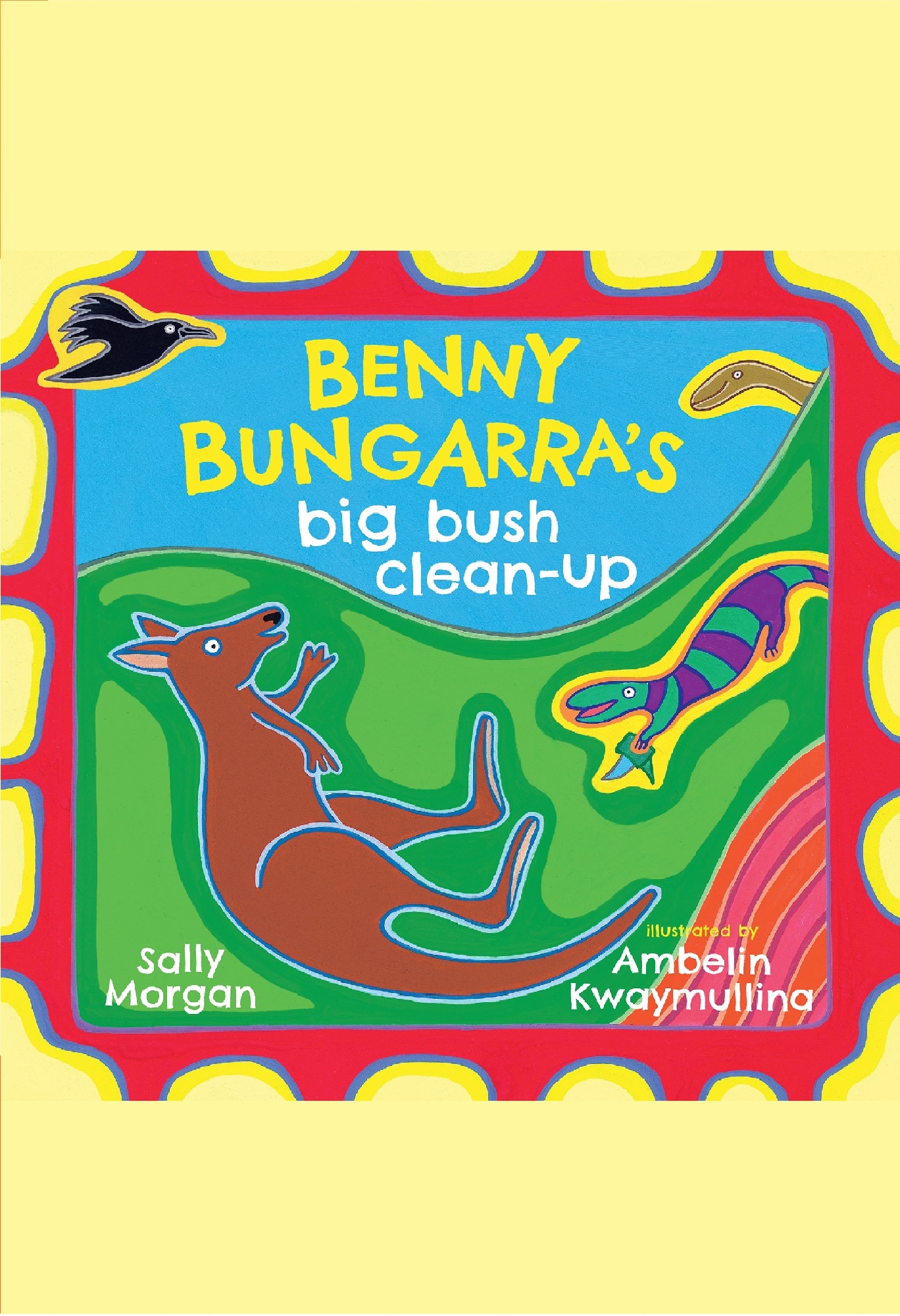



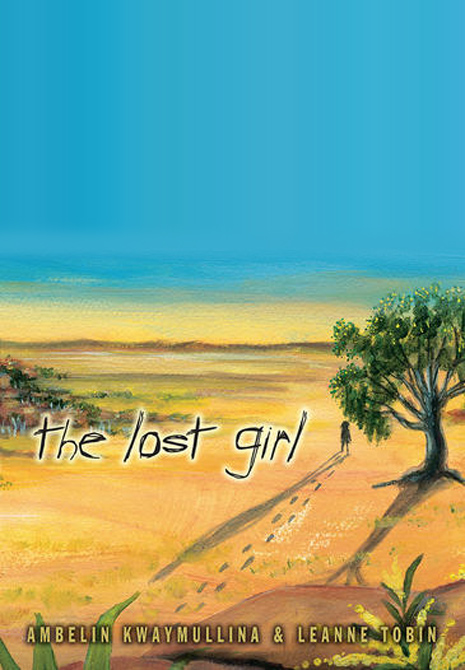
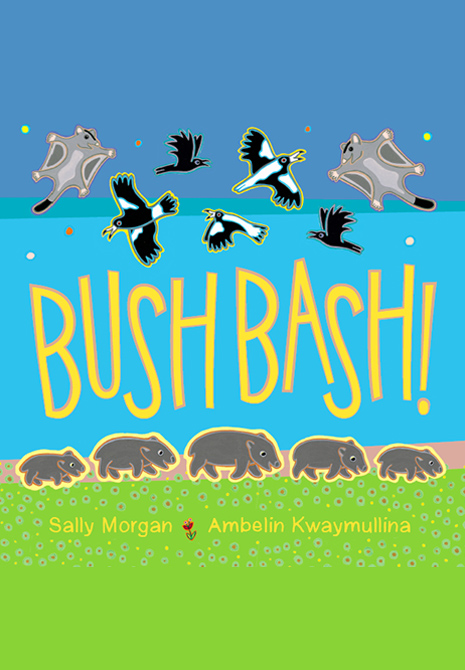

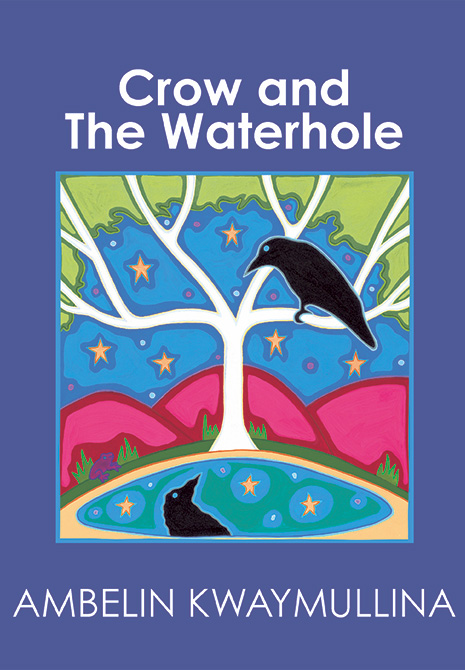

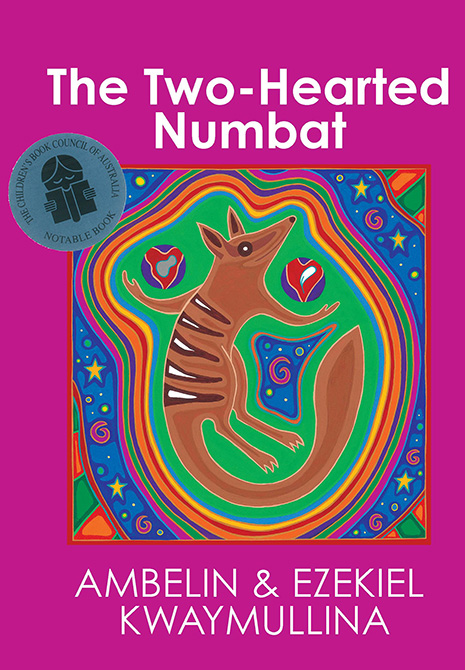
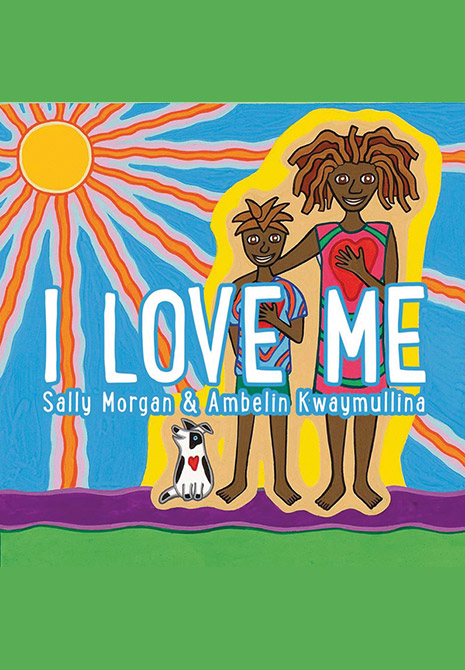




Picture Books and younger readers
“In the years that followed, whenever Crow met someone seeking their destiny, she would show them their reflection in the waterhole, and say – ‘Your destiny lies within you. All you need to do is learn how to see it.” (Crow and the Waterhole)
To find out more about my picture books, including reading reviews and accessing teacher's notes, click on the book title.
Contact Details
For publicity, media enquiries and bookings, please contact
me through my publishers:Walker Books Australia
Postal Address: Locked Bag 22, Newtown NSW 2042
Tel: +61 2 9517 9577
Email: publicitywba@walkerbooks.com.auFremantle Press
Postal Address: PO Box 158, North Fremantle WA 6159
Tel: +61 (0)8 9430 6331
Enquiry Form: http://www.fremantlepress.com.au/contactAllen & Unwin
Enquiry Form: https://www.allenandunwin.com/contact-us


Ambelin Kwaymullina, Writer and Illustrator
